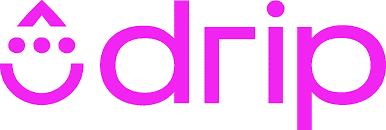Introduction and Overview: Mastering Drip Campaigns for Course Completion
When it comes to online courses, getting students to actually complete the material is often just as challenging as making the initial sale. The way you structure your email communication can make or break your course completion rates, which directly impacts your long-term success as a course creator. Let’s dive into how strategic drip campaigns can transform student engagement and completion rates.
Think of your drip campaign as a digital teaching assistant that works around the clock. It’s not just about sending automated emails – it’s about creating a supportive learning environment that guides students through your course material at the right pace. Your email sequence should mirror the natural learning journey, anticipating obstacles before they become roadblocks to progress.
A well-designed drip campaign typically includes welcome sequences, progress check-ins, celebration messages, and re-engagement touchpoints. But here’s what many course creators miss: these emails need to do more than just deliver information. They should create momentum, build confidence, and maintain enthusiasm throughout the entire learning journey.
The timing of your drip campaign is crucial. You’ll want to map out key moments in your course where students typically face challenges or might lose motivation. These become your strategic intervention points – opportunities to step in with encouragement, additional resources, or gentle reminders. No one wants to be bombarded with emails, but neither do they want to feel abandoned in their learning journey.
Consider the psychology behind student motivation. Adult learners juggle multiple responsibilities, and your course is competing for their attention. Your drip campaign should acknowledge this reality while helping them stay committed to their goals. This might mean sending shorter, more frequent emails during challenging modules, or spacing out communications during easier sections.
As we explore optimization strategies, remember that your drip campaign should evolve based on student feedback and completion data. What works for one course might not work for another, and that’s okay. The key is to start with a solid foundation and refine your approach based on real student behavior and engagement patterns.
Foundation Concepts and Planning
The success of your drip campaign hinges on understanding how students actually engage with your course content. Before diving into email sequences and automation, you need to map out the typical student journey and identify key completion milestones. There’s no single ‘best’ approach to drip campaigns – what works depends entirely on your course structure and your students’ learning patterns.
Start by analyzing your course completion data. Look for common drop-off points where students tend to disengage. These moments are your critical intervention opportunities. For example, if students consistently abandon the course after module three, that’s where you’ll want to concentrate your drip campaign efforts with targeted encouragement and support.
Your campaign foundation should address three core elements: timing, content relevance, and personal connection. Timing isn’t just about frequency – it’s about matching your communications to your students’ natural learning rhythm. If your data shows students typically complete one module per week, align your drip sequence to that pace rather than pushing for faster progression.


Content relevance means every email should serve a specific purpose in your completion strategy. Mix practical reminders with motivation and social proof. Consider creating email templates for different scenarios: celebration emails for milestone completion, gentle nudges for inactive students, and strategic check-ins at known challenging points in your course.
When building your drip sequence, segment your audience based on engagement levels. Create separate tracks for highly engaged students versus those who need more support. Your high performers might receive advanced tips and bonus content, while struggling students get more foundational support and encouragement.
| Feature | AccessAlly | Alternative |
|---|---|---|
| Course Creation | ✅ Advanced drag-drop builder | ❌ Basic editor only |
| Member Management | ✅ Built-in CRM system | ❌ Requires third-party tools |
| Payment Processing | ✅ Multiple gateways supported | ❌ Limited options |
| Integration | ✅ WordPress native | ❌ External platform |
The way you structure your campaign impacts everything downstream. Map out your entire sequence before writing a single email. Consider creating a campaign matrix that outlines trigger events, email content themes, and desired actions for each message. This blueprint becomes your guide for consistent, purposeful communication.
Remember to build in flexibility. Your initial campaign structure should be solid but adaptable. As you gather data on student responses, you’ll want to adjust timing, modify content, and potentially add new intervention points. The most effective drip campaigns evolve alongside your students’ needs and course interactions.
Finally, establish clear metrics for measuring campaign effectiveness. Beyond basic open rates and click-throughs, track how your emails influence course progression rates, completion times, and student satisfaction scores. These insights will guide your ongoing campaign refinements and help you create increasingly effective sequences.
Step-by-Step Implementation Guide
Let’s dive into the nuts and bolts of optimizing your drip campaign to boost course completion rates. When used strategically, drip campaigns can transform passive students into engaged learners who consistently progress through your material. The key is structuring your campaign to align with your students’ natural learning rhythm.
Start by mapping out your course milestones and identifying potential drop-off points. These typically occur after the initial excitement wears off (usually around week 2), before challenging modules, and during natural breaks in content. Your drip campaign should anticipate and address these vulnerable moments before they become problems.
Create a baseline welcome sequence that extends beyond the typical “here’s your login” email. Design a series of 4-5 emails delivered over the first week that orient students to your course platform, highlight quick wins they can achieve, and set clear expectations for their learning journey. Include specific action items in each email to build momentum from day one.
Next, develop your progress-tracking triggers. Set up automated check-ins that activate when students complete specific modules or when they’ve been inactive for a predetermined period. For example, if a student completes Module 1, send a congratulatory email with a preview of Module 2’s benefits. If they haven’t logged in for seven days, trigger a re-engagement sequence with a gentle reminder and a specific, achievable task.
| Feature | Benefit | Use Case |
|---|---|---|
| Drip Content | Increases engagement | Course progression control |
| Quiz & Assessments | Validates learning | Student progress tracking |
| Certificates | Motivates completion | Professional development |
| Community Access | Builds loyalty | Student interaction |
Segment your audience based on engagement levels and customize your messaging accordingly. High achievers might receive advanced tips and bonus challenges, while students falling behind could get simplified action steps and extra support resources. This personalized approach helps maintain momentum across different learning styles and pace preferences.
Build celebration touchpoints into your campaign. When students hit major milestones, activate special recognition sequences. This could include congratulatory videos, digital badges, or access to exclusive content. These moments of acknowledgment reinforce progress and motivate continued engagement.
Advanced Strategies and Techniques for Drip Campaign Optimization
When it comes to optimizing drip campaigns for course completion, the devil truly lies in the details. Your email sequence needs to do more than just deliver content—it needs to create momentum, maintain engagement, and strategically guide students toward completion. The way you structure your drip campaign impacts everything from initial engagement to final completion rates.
Start by implementing behavioral triggers that respond to student activity. For instance, if a student hasn’t logged in for five days, trigger a re-engagement sequence that includes success stories from other students who pushed through similar challenges. This personal touch helps combat the natural drop-off points that occur in most online courses.
Timing is crucial for maintaining momentum. Rather than sending emails on a rigid schedule, consider implementing dynamic timing based on individual student progress. If someone completes a module ahead of schedule, automatically adjust their next email delivery to maintain their momentum. This approach, which I detail further in “How to Create Captivating Online Courses with AccessAlly in 2025,” helps maintain engagement without overwhelming fast learners or rushing slower ones.
One often-overlooked strategy is the strategic use of micro-commitments throughout your drip sequence. Instead of focusing solely on course content, include small, achievable tasks in each email. These might be quick implementation exercises, reflection questions, or community participation prompts. When students consistently complete these smaller actions, they’re more likely to stay engaged with the larger course material.
Consider implementing a progressive feedback loop system. After each major module, send automated check-in emails that ask specific questions about the student’s progress and challenges. Use their responses to trigger different email pathways—offering additional support resources for those struggling or advanced materials for those excelling.
Data analysis should drive your optimization efforts. Track not just open rates and click-throughs, but also the correlation between email engagement and course progress. Look for patterns in timing—do students who open emails within the first hour show higher completion rates? Use these insights to refine your sending schedule and content strategy.
Finally, don’t underestimate the power of personalization beyond just using the student’s name. Segment your drip campaigns based on previous course behavior, quiz results, or self-identified goals. This allows you to craft messages that speak directly to each student’s specific challenges and aspirations, significantly increasing the likelihood of course completion.
Common Challenges and Solutions in Drip Campaign Optimization
When diving into drip campaign optimization for course completion, you’ll likely encounter several recurring challenges that can impact your success rate. The way you handle these obstacles directly impacts your students’ journey through your course material, so let’s explore practical solutions to keep your learners engaged and moving forward.
One of the most prevalent issues is timing misalignment. Students often receive follow-up emails either too quickly, overwhelming them, or too slowly, causing them to lose momentum. The solution lies in implementing adaptive timing based on student behavior. For instance, if you notice a student hasn’t logged in for five days, trigger a re-engagement sequence rather than continuing with your standard progression emails.
Content fatigue is another significant hurdle. Students can feel overwhelmed when receiving lengthy, information-heavy emails in quick succession. Break down your messages into digestible chunks, focusing on one key concept or action item per email. Consider using a mix of formats – text, video snippets, and quick tips – to maintain engagement while respecting your students’ time and attention spans.
There’s no single ‘best’ approach to handling varying completion rates among your student cohort. Some learners race through content while others take a more measured pace. Create branching logic in your drip campaigns that adapts to individual progress. Fast-moving students might receive advanced bonus content, while slower-paced learners get extra encouragement and simplified action steps.
Technical hurdles can also derail your drip campaign effectiveness. Combat this by implementing a robust tracking system that monitors not just email opens but meaningful engagement metrics like video completion rates and assignment submissions. When students hit technical snags, have automated support resources ready to deploy, including troubleshooting guides and direct links to your help desk.
Maintaining motivation throughout the course journey requires careful attention to psychological triggers. Structure your drip campaigns to celebrate small wins, acknowledge progress milestones, and create accountability through community engagement. For example, after completing a challenging module, trigger an email that both congratulates the student and connects them with peers who’ve reached the same milestone.
Remember that optimization is an ongoing process. Regularly analyze your completion rates, engagement metrics, and student feedback to refine your approach. What works for one cohort might need adjustment for the next, so stay flexible and ready to evolve your strategy based on real-world results.
Best Practices and Optimization
When it comes to drip campaign optimization, there’s no single “perfect” approach that works for everyone. Your course completion rates ultimately depend on how well you understand and respond to your students’ learning patterns. The way you structure your email sequences impacts everything from engagement to completion rates.
Start by analyzing your current completion data. Look for patterns in when students typically drop off or disengage. Are there specific modules where participation dwindles? These insights will help you strategically position your drip campaign touchpoints. For instance, if students often struggle with Module 3, schedule additional encouragement emails and resource reminders just before that point.
Timing is crucial for drip campaign success. While conventional wisdom might suggest sending emails at “peak” times, your course participants may have different preferences. Test various sending schedules – some students engage better with morning emails, while others prefer evening check-ins. According to Campaign Monitor’s research, educational emails often see higher engagement rates during weekday evenings when students have more time to focus.
Personalization goes beyond just using first names. Segment your audience based on their progress and engagement levels. Create separate email streams for quick learners versus those who need more time. Consider implementing “catch-up” campaigns for students falling behind, offering condensed summaries and quick-win activities to help them get back on track.
Monitor your email metrics carefully, but don’t get overly fixated on open rates. Instead, focus on meaningful engagement indicators like click-through rates to course materials and completion of suggested activities. If certain emails consistently underperform, revise their content or timing rather than immediately scrapping them.
Interactive elements can significantly boost engagement. Include quick polls about course content, encourage replies with specific questions, or add clickable progress checks. These interactions not only provide valuable feedback but also help students feel more connected to the learning process.
Remember to maintain a balanced frequency. Too many emails can overwhelm students, while too few might not provide enough support. A good starting point is 2-3 targeted emails per week, adjusting based on course intensity and student feedback. The goal is to provide consistent support without creating email fatigue.
Case Studies and Examples: Real-World Drip Campaign Success Stories
Let’s dive into some illuminating examples of how course creators have optimized their drip campaigns to boost completion rates. When used strategically, these case studies can provide valuable blueprints for your own campaign optimization efforts.
Take Sarah, a business coach who noticed her 12-week leadership program had a 40% drop-off rate by week four. She revamped her drip sequence to include micro-wins every three days, rather than waiting for weekly achievements. Her new campaign featured 5-minute action items, quick implementation guides, and celebration prompts. Within two months, her completion rate jumped to 78%, and student satisfaction scores increased by 35%.
Another standout example comes from Marcus, a language learning instructor who struggled with student engagement in his Spanish immersion course. His original drip campaign sent lengthy lessons twice weekly, but students felt overwhelmed. He restructured his campaign to deliver bite-sized daily lessons, each taking no more than 15 minutes to complete. He also incorporated personalized progress tracking emails that showed students their advancement through custom milestone markers. This adjustment resulted in a 62% increase in course completion.
Consider also the case of TeamTrain, a corporate training platform that transformed their onboarding sequence. Instead of bombarding new users with feature tutorials, they implemented a behavior-triggered campaign that responded to individual user actions. If a student completed a module ahead of schedule, they received advanced content earlier. If someone fell behind, the system automatically sent encouraging check-ins with simplified catch-up plans. This adaptive approach led to a 45% reduction in course abandonment.
The success pattern across these cases reveals several key elements: personalization based on user behavior, strategic timing of content delivery, and the incorporation of achievement recognition. What’s particularly noteworthy is how each example found its sweet spot for communication frequency – not too sparse to lose momentum, but not so frequent as to overwhelm.
Perhaps the most impressive transformation came from a mindfulness instructor who initially struggled with a 25% completion rate. By implementing video check-ins, peer accountability partnerships, and progress-based reward emails, she saw completion rates soar to 85%. The key was creating a community feel within her automated sequences, making students feel personally supported even through automated touchpoints.
These examples demonstrate that successful drip campaigns aren’t just about delivering content – they’re about creating an engaging journey that keeps students motivated and moving forward. By studying these success stories and adapting their strategies to your unique context, you can craft drip campaigns that truly serve your students’ needs while driving course completion.
Frequently Asked Questions
What’s the most effective way to create an online course?
Hi! I recommend starting with a clear course outline and breaking your content into digestible modules that build upon each other. Focus on creating engaging content that solves specific problems for your target audience, and include a mix of video lessons, downloadable resources, and actionable assignments to keep students engaged.
Which course platform should I choose for best results?
The best platform depends on your specific needs, but I typically recommend Teachable or Thinkific for their robust marketing features and user-friendly interface. Look for platforms that offer essential features like automated emails, payment processing, and course analytics while integrating well with your existing marketing tools.
How can I improve course completion rates?
To boost completion rates, implement a strategic drip campaign that sends encouraging emails at key milestones and re-engages inactive students. Consider offering completion certificates, early-bird discounts for future courses, and creating accountability groups to keep students motivated throughout their learning journey.
What are the essential steps to create an engaging online course?
Start by validating your course idea through market research and creating a detailed outline of your curriculum. Focus on developing high-quality content, setting up an effective payment processing system, and creating a marketing strategy that includes both promotional campaigns and retention tactics.
What should I look for in a course creation platform?
Prioritize platforms that offer robust marketing tools, flexible payment options, and detailed analytics to track student progress and engagement. Look for features like customizable landing pages, coupon campaign capabilities, and automated email sequences to help optimize your course business and maximize student success.
Future Considerations and Conclusion
As we look ahead to the evolution of drip campaigns for course completion, it’s crucial to recognize that automation technology and student expectations are constantly shifting. The way you structure your drip sequences today will need regular refinement to stay effective tomorrow. Consider implementing AI-powered personalization tools that can adapt message timing based on individual student engagement patterns – this represents the next frontier in course completion optimization.
Data analytics will play an increasingly vital role in your drip campaign success. Start building your measurement framework now by tracking not just open rates and click-throughs, but also specific learning milestones, completion velocity, and student satisfaction scores. These metrics will help you identify which message sequences drive the strongest completion rates for different student segments.
Mobile optimization isn’t just a nice-to-have anymore – it’s becoming the primary way students engage with course content. Ensure your drip campaigns are designed with mobile-first experiences in mind, including shorter message lengths, thumb-friendly call-to-action buttons, and responsive multimedia content that loads quickly on any device.
There’s no single ‘best’ approach to drip campaign optimization – what works for one course creator might fall flat for another. The key is developing a systematic testing protocol that allows you to experiment with different variables while maintaining consistent baseline measurements. Consider testing elements like message frequency, content type, subject line formats, and personalization depth.
Looking ahead, voice and video messaging integration within drip campaigns will likely become more prevalent. Start exploring how you might incorporate brief video check-ins or voice notes to create more personal connections with your students. These multimedia touchpoints can significantly boost engagement when used strategically at key moments in the learning journey.
Remember that your drip campaign strategy should evolve alongside your course content and student needs. Schedule quarterly reviews to assess campaign performance, gather student feedback, and make necessary adjustments. The most successful course creators are those who maintain this balance between automation and authenticity, consistently refining their approach to support their students’ success.




